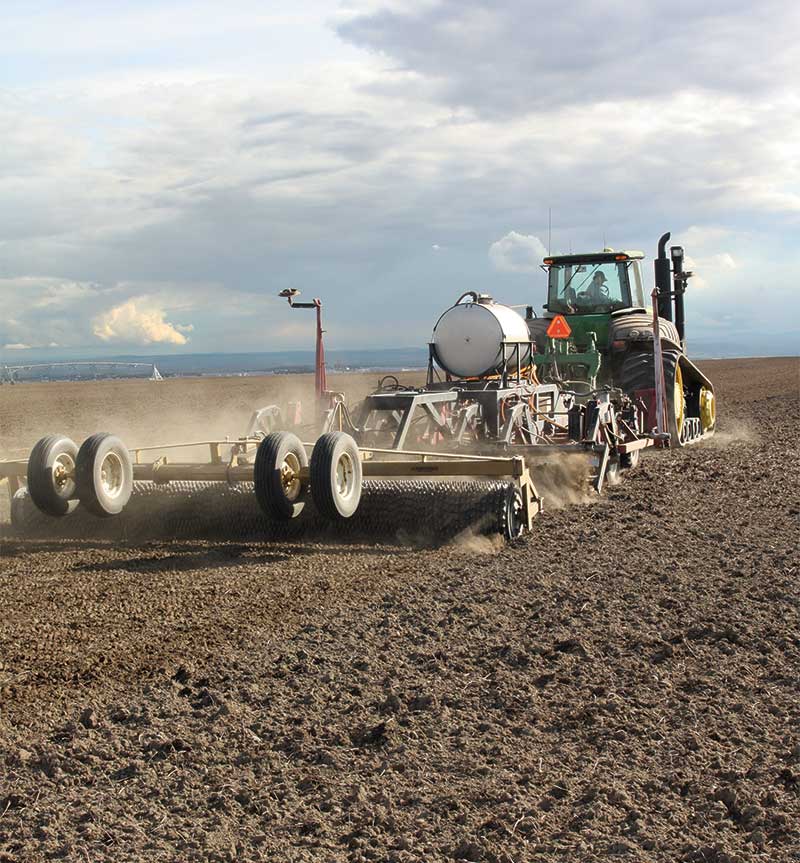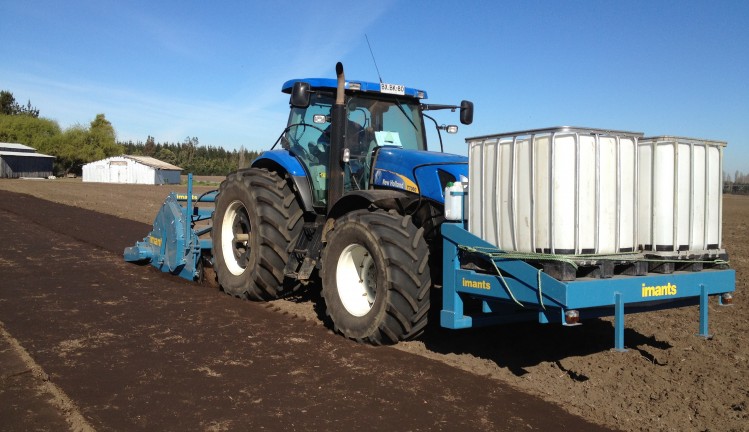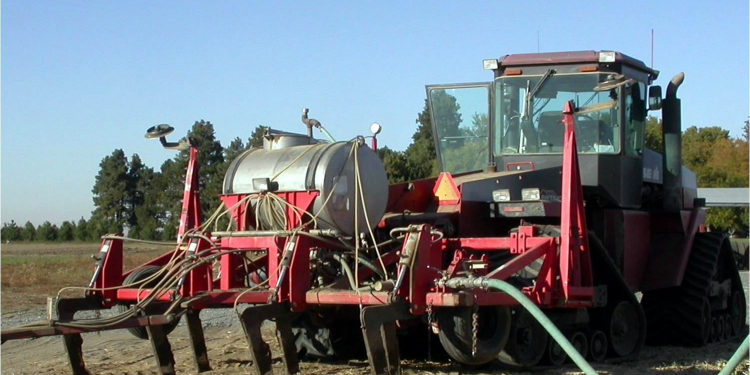Most people agree that soil health is a key component to crop health and agricultural sustainability. Yet we haven’t standardized a clear and measurable definition of soil health. You’ll find it’s a vague concept in most discussions. We need an adequate definition of soil health because it will help growers choose the best soil health management practices, an important part of farm sustainability.

Fumigation Gets a Bad Rap
With regard to soil fumigation, most articles on the topic have featured the opinions and perspectives of a few academic researchers who are funded by fumigant alternative grants. This creates an unbalanced representation of modern soil fumigation for soil health, which serves to obscure understanding of the topic by growers and the agricultural community at large. Growers need clear definitions of soil health as it pertains to the reality of their farms.
There is a large volume of published scientific research showing that soil fumigants such as chloropicrin do not harm soil health, and in fact they improve it. But the main reason that growers use soil fumigants is because they work.
Soil fumigants are restricted-use pesticides which are specialized due to their volatility and movement through soil pores. Soil fumigants work because we find their net effect within days and weeks after application beneath the soil (at a depth of 8 inches or more) greatly reduces incidence of soil-inhabiting crop pests and diseases.
Simultaneously, soil microorganisms (bacteria and fungi), which do not cause disease on crops, take advantage of newly available food sources created by soil fumigation and quickly dominate the soil microbiological population.
The mantra for some is that soil fumigants are bad. When soil fumigants are mentioned in an article featuring fumigant-alternatives, soil fumigants often are described as decimating the soil microbiology, decreasing the diversity of microorganisms, and worse yet, creating a dependence on their continued use.
Yet, the science says otherwise. There is vast industry experience and correspondingly abundant scientific literature spanning from 1936 to 2020 that shows that some soil fumigants can be part of a long-term sustainability plan benefiting soil health.
Not All Fumigants Are Equal
Of course, each soil fumigant affects soil biology differently and as such should be evaluated individually. We can’t lump all into the same basket.
Collectively, this body of scientific literature reveals that soil microbial communities are complex, resilient, robust, fast re-colonizers, and exploit newly available food sources created by soil fumigation.
For example, fumigation with chloropicrin is reported to actually increase the population of the fungus Trichoderma spp., which is known to improve soil and crop health. Thus, the specific choice of fumigant will affect not only the soil pest population, it may also drive the proliferation of organism beneficial to soil health and crop growth. This is a clear example that does not support the narrative that soil fumigants sterilize soil.
Recent published research using powerful techniques, such as advanced high-throughput DNA sequencing, has revealed that microbial biomass and diversity in soil re-establish and stabilize within days to weeks following the use of fumigants such as chloropicrin and 1,3-dichlorpropene (1,3-D). These analytical methods provide a more comprehensive and genetically specific analysis of the types and numbers of soil microbes in a farm soil.
As a general rule, soil microbes which cause plant disease depend, by their nature, on the host plant. And they recover much slower compared to free-living organisms, which represent the vast majority of the soil microbiome.
A Need to Define Soil Health?
Fundamental misconceptions surrounding the effects of soil fumigants on soil health arise, in part, from the lack of a universally accepted definition. A definition of soil health needs to be relevant to the pragmatic objectives of farmers with regard to soil management, and growing healthy and profitable crops in a perpetual and sustainable production system. Consider this proposed definition of soil health:
The state of soil conditions characterized by
- Reduced populations of soil pests
- The proliferation of microorganisms beneficial to crop health
- Optimal soil chemical and physical characteristics that support the specific needs of the crop being grown.
We can measure each of these three soil components and, therefore, compare different soils or treatments.
If we want to compare fumigated v. non-fumigated soil or more broadly, or treated v. untreated soil, or one fumigant to another, we can establish a set of parameters of soil health that we quantify using this definition as a framework. A measurable, specific definition of soil health will permit us to more objectively interpret the scientific literature relevant to this topic as well as define the practical significance of current research.
Lastly, a definition of soil health facilitates our conversations with the greater agriculture industry, including regulatory bodies and growers who want to understand the effects that fumigants have on their soil.
What Is the Practical Significance of This to the Grower?
First, It places the focus of soil health discussions and associated research on what matters most; reducing crop losses caused by pests and diseases without diminishing or threatening agricultural sustainability. The goals of soil health research will be concentrated on demonstrating decreased crop loss, increased yields, and achieving a soil microbiological profile that is robust, diverse, and supportive of overall crop health.
Second, the agricultural industry, university and private researchers, consultants, and the growers whom we serve can more effectively partner in discovering and characterizing specific traits of the soil microbiome which best supports soil health. In this effort, we can utilize modern and powerful technology such as genetic identification tools to assess previously elusive soil microbiological community profiles which identify what organisms are present under different soil treatment regimes, and reach conclusions about which treatment strategies result in the best outcomes of both soil health and crop production.

Broadening the conversation on soil health and focusing research on key soil health aspects will provide the agricultural community with more complete information on soil health and increased options for farm sustainability.
Recommended Reading
If you’d like to learn more about fumigation’s impact on soil health, take the time to read these articles on the topic:
- Soil Fumigation in Florida Tomato Production. Dr. Nathan Boyd, University of Florida
- Potato Soil Health Research Underway, Dr. Kenneth Frost, University of Washington
- How To Figure Out The Replant Disease Puzzle, Dr. Tim Smith, Washington State University
- Orchard Soil Fumigation, Dr. Tim Smith, Washington State University
- Improve Sustainable Potato Production with Strike, Dr. Chad Hutchinson, TriCal Group









